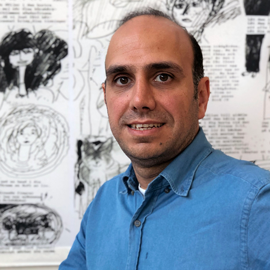ITM aims to improve KTH ranking

How can ITM contribute to KTH’s position in the global ranking system for universities? That’s what Hatef Madani, impact leader at ITM tries to find out.
If you want to know the quality of a an international university, you should look at its ranking. There are a number of different ranking systems, all of them with anonymous abbreviations like THE, QS, SRC and ARWU ranking. Over recent years international ranking lists measuring the excellence within research, education and collaboration have had an increasing impact in society.
“A high ranking attracts both international and Swedish students. The same applies to recruitment of international researchers and teachers. Another point is to establish partnership and collaboration with the most well-known universities in the world and establish research collaborations with industry and society, so this matters,” explains Head of the ITM School Pär Jönsson.
In order to see how ITM can chip in to improve KTH’s overall ranking, Pär has asked Hatef Madani, impact leader at ITM, to dig deeper into the rankings criteria and compare with the department’s results, something he’s been busy with during the autumn.
One aspect that really influence ranking is publication strategies. It might for example be how many scientific papers ITM publishes every year; the quality of the journals where they are published; the number of citations, and national and international collaboration.

“If each unit at ITM can improve their publication strategies beside some other factors, it will affect the overall KTH ranking”, Hatef Madani says.
He doesn’t – yet – want to reveal what the strong or the weak points are for each department, since “it would be a spoiler”.
" But our young Sustainable Production department in Södertälje showed high quality on publications. They have a relatively high share of publications among the top 10% cited worldwide".
Hatef hopes that the work he’s doing will give a deeper understanding of ITM’s weak and strong points so that the ITM management can find strategies to improve weaknesses and keep up what we’re good at.
“At this stage, I am meeting the head of departments to have a deeper discussion on the findings. The next round, we will arrange more public events for all the faculties to inform them about what we see and how to get even better”.
He wants to point out that the KPIs he’s looking at, despite their importance, should be viewed upon as a tool to improve our performance besides other tools.
“If we put the KPIs for ranking as our goals then there is a risk of overlooking a lot of other qualitative KPIs in our research and education.
Are more schools at KTH doing the same type of work?
That, I don’t know. My plan is to present it later to other impact leaders at KTH and see what we can do together as a team.
Read more about KTH’s current ranking placement
Text: Anna Gullers